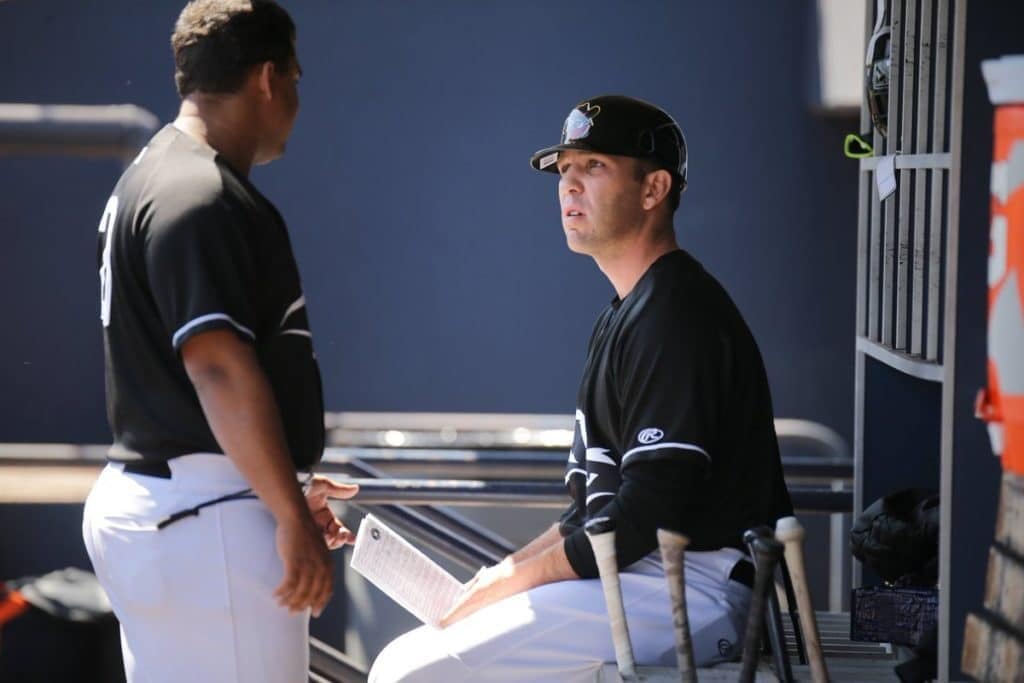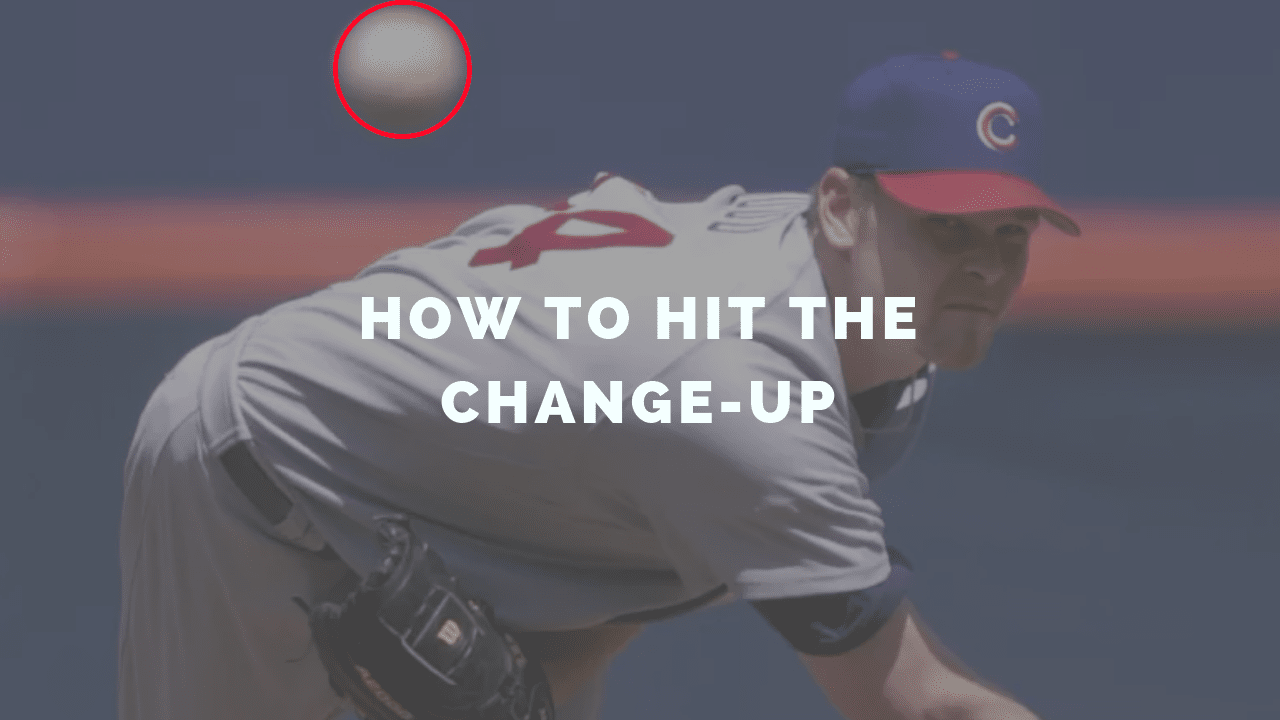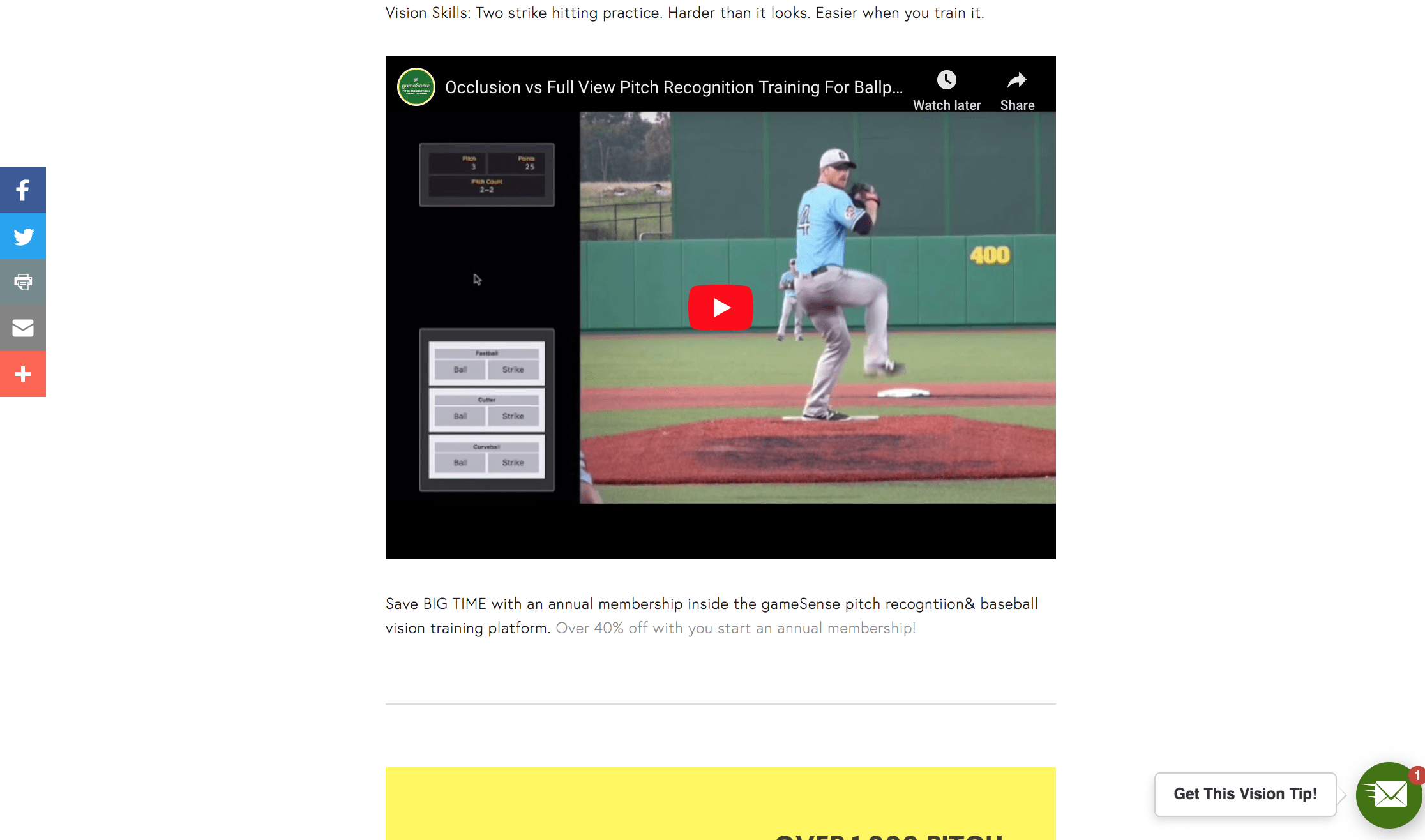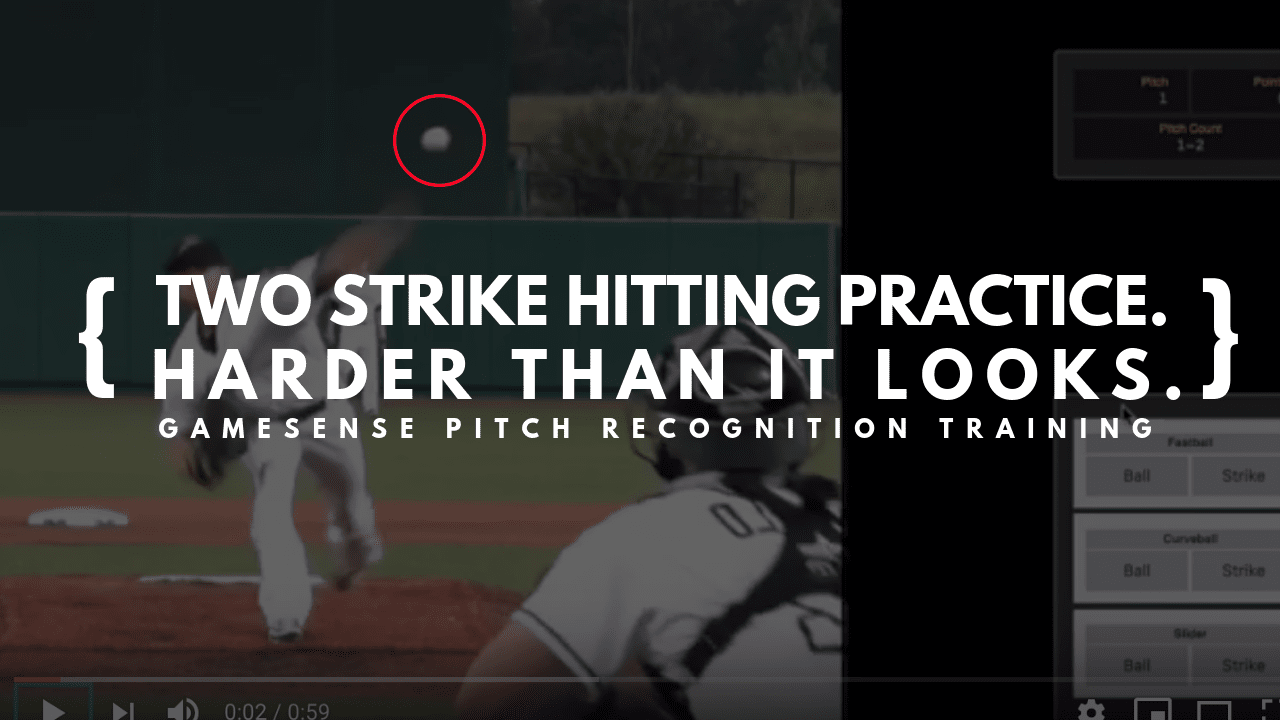 Tom Pardikes
Tom Pardikes
Tech Makes Baseball a Simple Game: You See the Ball, You Hit the Ball, You Got It?
This is the third story in a five-part series that examines how swing biomechanics and the proliferation of technological tools are helping hitters.
Modern technology is able to illuminate the kinematic sequence of a hitter’s swing, but those assessments top out at the athlete’s torso. What happens above the neck is just as critical, and it’s hard not to lean into baseball’s most famous truism of all: Yogi Berra famously said the game is “90% mental,” which makes perfect sense if you ignore that fact that he said the other 50% is physical.
Absorb The Unexpected

It’s game day. You show up to the field.
Pregame B.P. Done.
Pre-Game Warm-Up. Done.
Go back to the clubhouse. Put on the game uniform.
Taped up. Tarred up. Swig some water, Gatorade…and finish whatever superstitious pregame routine you got, if you even have one.
Cleats are on. You’re good to go. Locked in…until…
…you’re in the dugout. You look over at the line-up.
You’re not hitting in the spot you normally hit in.
You’re not playing the position you normally play.
On top of that – the pitcher you thought you were facing, isn’t pitching. It’s a pitcher who pitches from the opposite side on the mound, and he throws harder but wilder.
Even the hitter’s eye is all jacked up. It’s maroon.
Who paints a hitter’s eye maroon? You’ve only hit in blue or dark green. WTF.
You have two options.
Get on your heels because things aren’t going according to plan…so you go into a shell, become unresponsive to your teammates and start worrying about what happens if you fail…
…or dig in, dig deep, build your team-mates up, see this as an opportunity instead of a problem and embrace the chaos.
Hitting…isn’t just about swinging a round bat at a round ball…
…it’s so much more.
It’s learning how to be a great competitor.
It’s about showcasing your composure.
When the game is on the line, or scouts are in the stands…you still compete with toughness and focus.
Even keel.
What’s the first step? It’s simple.
You realize the truth that you’ve known deep down this entire time.
It’s not about you.
It’s never been.
It never will be if what you want is to be a valuable part of any line-up.
How do you know you’re playing this game knowing it’s not about you?
You smile a little every time the coach gives you a hit and run or sac bunt because you know you’ll get it done.
You have the instinct to take a pitch ahead in the count when the runner gets a good jump to swipe a bag.
You turn a fly ball that drops in shallow right into a double.
You play solid defense when you’re struggling at the plate.
It seems like every game ends with a little dirt on your uni.
All in all. You’re a gamer.
Gamers don’t quit. Gamers don’t panic…
…and Gamers sure as hell don’t pout.
If you want to be a true gamer…absorb the unexpected.
Get 40% off with an annual membership inside the gameSense pitch recognition & baseball vision training platform. Over 40% off with you start an annual membership!
Pro & College Level Pitch Recogntion & Vision Training Sequences.



Speciality Pitch Recogntion & Vision Training Sequences.



Tech Makes Baseball a Simple Game: You See the Ball, You Hit the Ball, You Got It?
Modern technology is able to illuminate the kinematic sequence of a hitter’s swing, but those assessments top out at the athlete’s torso. What happens above the neck just as critical, and it’s hard not to lean into baseball’s most famous truism of all: Yogi Berra famously said the game is “90% mental,” which makes perfect sense if you ignore that fact that he said the other 50% is physical.
Take the “IF” out of your swing.
Want to know the main difference between high school level pitching and college level pitching? A good Friday/Saturday starting pitcher is able to locate secondary pitches, consistently.
The difference between a college guy and a pro guy? A pro guy can locate secondary pitches and is able to pitch backwards. Meaning – the 2-0 fastball isn’t always a given. Neither is the 2-2 breaking ball pitch to contact. Heck – he may even start the 1st inning establishing the breaking ball 0-0 for the first three hitters of the game.
Now – what’s the difference between a pro guy and a big league guy? A big league guy can do all of the above, and for the MOST part, you’re only going to see one pitch per at-bat, that you can really handle. This is why being ready to hit is such an important factor and why most of the time when you miss your pitch or fail to make 100% solid contact, it has something to do with how locked in you are on that pitch.
Our man, Springer from Quality At-Bats breaks it down for us in this 30 seconds Instagram Post. If you’re missing pitches you should be driving or freezing on the fastball down the middle, we highly recommend you check this out. How to take the “IF” out of your swing.
P.S. If you want to share our obsession with seeing the ball better, join us and thousands of other hitters getting after it in the gameSense training.
Vision Skills: Two strike hitting practice. Harder than it looks. Easier when you train it.
If you’re lucky, you have access to the pitches you struggle with the most with two strikes on paper…
…and my gut says it’s the change-piece.
Don’t believe me? The next time you swing at a ball in the dirt, I want you to think about what I just said.
You struggle with the off-speed when behind in the count.
All hitters do.
This is why good pitching beats good hitting. Every time.
Does this doesn’t mean there’s no hope w/ two strikes?
Nope.
There’s plenty of hope. You just need a plan.
Part of that plan is your pitch recognition skills, habits, and routines.
If you don’t have a plan, and your pitch recognition skills are underachieving, then, yeah, it’s hopeless. Good luck…you’re just another dressed-up out.
But you’re reading this for a reason, right?
You wanna be a better hitter.
Good.
That’s what we want too.
Do this now, it’ll help us help you.
Describe your hitting philosophy in one, simple sentence.
Reply and let us know.
–
What type of pitches do you struggle with picking up the most?
–
Based on our 1,000s of players training in the gS app, it’s the changeup.
–
You can train to recognize the change-up 24/7 at game speed @gamesensesports.com
.
?Measure your progress.
?Recognize elite fastball.
⚾️Practice adjusting to the Change-Up.
?Master SEEING the ball out of the pitcher’s hand.
?Stop guess hitting
.
Vision Skills: Two strike hitting practice. Harder than it looks. Easier when you train it.
Watch this Fastball – Curveball pitch recognition practice sequence and see how you’d do.
Save BIG TIME with an annual membership inside the gameSense pitch recogntiion& baseball vision training platform. Over 40% off with you start an annual membership!
Pro & College Level Pitch Recogntion & Vision Training Sequences.



Speciality Pitch Recogntion & Vision Training Sequences.



How To Break Back Into The Line-Up. Be A Barell Guy. Tips From Coach Mongero
When you’re trying to work yourself into the line-up, there are a few things you can do.
One of them is playing good defense.
A good glove keeps you in the line-up and on the field.
But there are a few other things that a hitter can leverage to give themselves a chance to contribute EVEN more to the team.
Coach Mongero lays it out in about 20 seconds in this video.
Save BIG TIME with an annual membership inside the gameSense pitch recogntiion& baseball vision training platform. Over 40% off with you start an annual membership!
Pro & College Level Pitch Recogntion & Vision Training Sequences.



Speciality Pitch Recogntion & Vision Training Sequences.



The Hit Station – A new pitch recognition & baseball vision training by gameSense
Hitting is a split second decision period.
You have to recognize pitch type, ball or a strike, react accordingly and THEN hope that your mechanics are on point and your approach is correct.
No wonder hitting is the hardest thing to do in all of sports.
And like our boy Steve Springer says:
“Baseball is the biggest self-esteem destroying sport in the world” – Steve Springer
We agree.
This is why hitters are using every tool and advantage to gain that edge.
This is also why we’re excited to launch the HIT STATION.
Our newest gameSense pitch recognition training feature.
When you log in and click on Hit Station, you’ll be presented with a simulation pitch sequence.
You anticipate the type of pitch, ball or strike and then receive direct feedback.
It’s a perfect way to incorporate it into your actual batting practice session with a bat in your hand.
Pro & College Level Pitch Recogntion & Vision Training Sequences.



Speciality Pitch Recogntion & Vision Training Sequences.





 I bet you 90% of your strikeouts are either a strike three called looking because you weren’t ready to put the ball in play or chasing a ball in the dirt. I’m right, aren’t I?
I bet you 90% of your strikeouts are either a strike three called looking because you weren’t ready to put the ball in play or chasing a ball in the dirt. I’m right, aren’t I?





